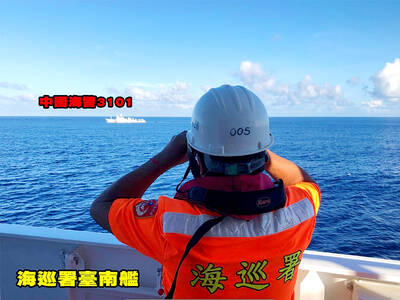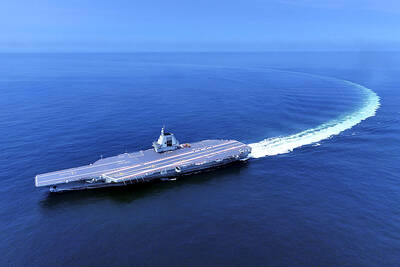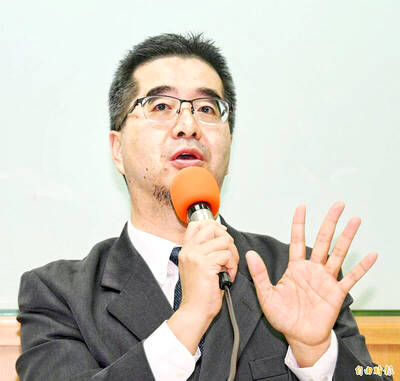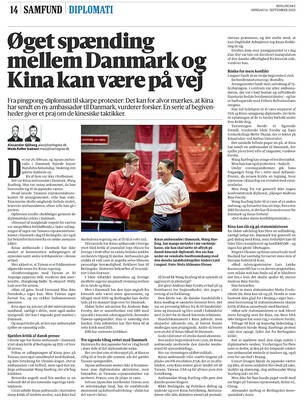The Civil Aeronautics Administration (CAA) on Friday disclosed a full transcript of the communications between Taiwanese and Hong Kong air traffic controllers, rebutting the latter’s claim that a Taiwanese plane had voluntarily abandoned its flight path.
Hong Kong denied permission for the plane to proceed to the disputed Pratas Islands (Dongsha Islands, 東沙群島), which are claimed by both Taiwan and China, the CAA said.
The incident happened on Thursday when a civil aircraft chartered by the military was advised by Hong Kong air traffic controllers to not enter the airspace over a group of islands in the South China Sea because of “dangerous activities” in the area, the CAA said.
The Pratas Islands, which are administered by Taiwan, are about 310km southeast of Hong Kong and are within its Flight Information Region (FIR).
It has been standard practice for Taiwanese air traffic controllers to inform their Hong Kong counterparts about planes that are to enter the territory’s FIR 20 to 30 nautical miles (37km to 56km) ahead of entry, the CAA said.
On the day of the incident, Hong Kong contacted Taipei when the plane was still 50 to 60 nautical miles (93km to 111km) away from the Hong Kong-administered FIR, it said.
The Uni Air ATR2-600 aircraft was transporting coast guard officers and marine national park personnel to the islands, where about 250 officers are regularly stationed.
The Taipei side on that day asked the Hong Kong side if the denial of passage was due to ongoing military exercises, but no further information was given, the transcript showed.
However, the Hong Kong air traffic controller indicated that he simply could not allow a Taiwanese plane into the area, it showed.
“Affirmative, so Hong Kong cannot accept this aircraft. Can you talk to your military?” the Hong Kong air traffic controller said, according to the transcript.
Asked by Taipei if any notice had been given in advance about the supposed danger in the area, Hong Kong said no.
Normally, notice is given 48 hours in advance for activities such as military drills, according to military experts.
Earlier on Friday, Hong Kong’s Civil Aviation Department said it received a CAA notice of the UNI Air aircraft’s planned entry into the Hong Kong FIR and reminded Taipei that the plane must stay above the minimum safe altitude.
Then the Taiwanese side canceled the entry request, the Hong Kong department said, adding that it followed protocol in handling the situation.
According to the transcript, the Hong Kong air traffic controller indicated that only the area above 26,000 feet (7,925m) was safe.
The aircraft was not equipped to fly above that altitude and was eventually forced to return to Kaohsiung, the CAA said.

The Coast Guard Administration (CGA) yesterday said it had deployed patrol vessels to expel a China Coast Guard ship and a Chinese fishing boat near Pratas Island (Dongsha Island, 東沙群島) in the South China Sea. The China Coast Guard vessel was 28 nautical miles (52km) northeast of Pratas at 6:15am on Thursday, approaching the island’s restricted waters, which extend 24 nautical miles from its shoreline, the CGA’s Dongsha-Nansha Branch said in a statement. The Tainan, a 2,000-tonne cutter, was deployed by the CGA to shadow the Chinese ship, which left the area at 2:39pm on Friday, the statement said. At 6:31pm on Friday,

The Chinese People’s Liberation Army Navy’s (PLAN) third aircraft carrier, the Fujian, would pose a steep challenge to Taiwan’s ability to defend itself against a full-scale invasion, a defense expert said yesterday. Institute of National Defense and Security Research analyst Chieh Chung (揭仲) made the comment hours after the PLAN confirmed the carrier recently passed through the Taiwan Strait to conduct “scientific research tests and training missions” in the South China Sea. China has two carriers in operation — the Liaoning and the Shandong — with the Fujian undergoing sea trials. Although the PLAN needs time to train the Fujian’s air wing and

The American Institute in Taiwan (AIT) put Taiwan in danger, Ma Ying-jeou Foundation director Hsiao Hsu-tsen (蕭旭岑) said yesterday, hours after the de facto US embassy said that Beijing had misinterpreted World War II-era documents to isolate Taiwan. The AIT’s comments harmed the Republic of China’s (ROC) national interests and contradicted a part of the “six assurances” stipulating that the US would not change its official position on Taiwan’s sovereignty, Hsiao said. The “six assurances,” which were given by then-US president Ronald Reagan to Taiwan in 1982, say that Washington would not set a date for ending arm sales to Taiwan, consult

A Taiwanese academic yesterday said that Chinese Ambassador to Denmark Wang Xuefeng (王雪峰) disrespected Denmark and Japan when he earlier this year allegedly asked Japan’s embassy to make Taiwan’s representatives leave an event in Copenhagen. The Danish-language Berlingske on Sunday reported the incident in an article with the headline “The emperor’s birthday ended in drama in Copenhagen: More conflict may be on the way between Denmark and China.” It said that on Feb. 26, the Japanese embassy in Denmark held an event for Japanese Emperor Naruhito’s birthday, with about 200 guests in attendance, including representatives from Taiwan. After addressing the Japanese hosts, Wang